It’s funny how what is old becomes new again. As AKU recently noticed, this cycle – which is usually associated with fashion trends – also applies to outdoor gear. For example, we’ve seen a recent resurgence in ‘fast and light’-style footwear, as the demand for featherweight boots designed for so-called ‘speed hiking’ has exploded over the past few years.
But actually, the quest for lighter kit is nothing new. Back in the early 1980s, British brand Karrimor broke the mould when it launched its K-SB (‘Karrimor Sports Boot’) – the first ever pair of proper lightweight hiking boots, made from suede and Cordura nylon textile uppers backed with a waterproof Gore-Tex lining.
The first K-SBs were made under licence by various European bootmakers based in Italy and elsewhere. Seeing the model’s success, many other brands soon brought similar models to market, combining lightweight uppers with a grippy but flexible sole unit derived from sports shoes. The AKU Slope Original GTX boot is a case in point.
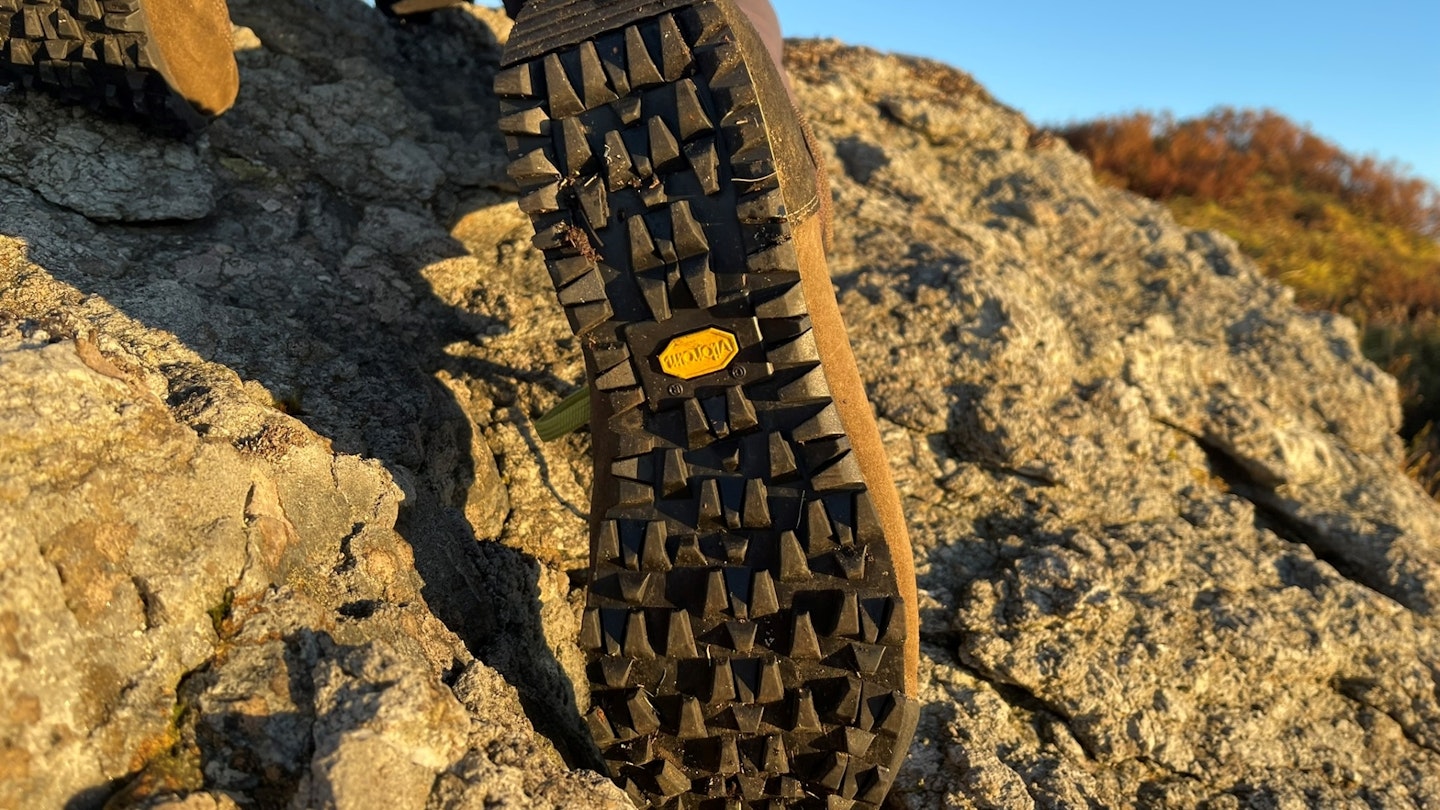
The Italian brand has been making this core style for nearly 40 years, achieving immense popularity (especially in its native Italy) due to its comfort-focused fit and balanced approach when it comes to overall weight, breathability and performance.
AKU describes it as “suitable for daily trekking on easy and medium difficulty terrain”, as well as being “ideal for lighter, more leisurely activities in the great outdoors”. Nor is the irony of a heritage style being perfect for modern weight-conscious users lost on the brand either, with their marketing copy emphasising the fact that the Slope Original has “the comfort and softness of a modern fast hiking boot”. The fact that you also get nicely on-trend retro looks is just a bonus.
Pros
- High levels of comfort
- Breathable
- Grippy traction
- Lightweight
Cons
- Not the most cushioned
- Not suitable for more technical ground
- Minimal ankle support
- No protective toecap or rubber rand
| RRP: | £205 / $250 |
| Uppers: | 1.4mm suede leather with Air8000 fabric panels |
| Waterproofing: | Gore-Tex Performance Comfort liner |
| Midsole: | Double density die-cut EVA foam rubber |
| Outsole: | Vibram Erica Everest |
| Sizes: | UK 4-12 (men’s); UK 4-8 (women’s Ultralight Original GTX) |
| Weight (per boot): | 520g / 18.3oz (men’s EU 42/UK 9) |
Design and features
The Slope boot actually comes in a few different guises, though the differences are minor. The standard Slope is available in no nonsense traditional colours, with uppers made from 1.6mm split suede panels. The Slope Original, reviewed here, adds some on-trend contrast colour blocking, though it uses marginally lighter 1.4mm suede leather.
Then there’s the Slope V-Light GTX(or women’s Ultralight Original GTX), a fully synthetic version with recycled microfibre uppers, made from a blend of polyester and polyamide. This material is 1.8mm thick and fractionally lighter than suede – but the total weight difference per boot compared to the Slope Original is a measly 10g (in a UK size 9).
For enhanced breathability, all the Slope walking boots feature large panels of the brand’s proprietary Air8000 fabric. Owned and patented by AKU, it has been proven in lab tests conducted by Gore-Tex to deliver 11.5 times more breathability than a conventional upper fabric. The goal is to reduce moisture build-up so your boots don’t feel as sweaty.
Underneath the upper is a full Gore-Tex ‘bootie’, a sock-like lining of waterproof material. It encloses every part of your foot from the toes to the top of your ankle. The type of Gore-Tex fabric used here is called Gore-Tex Performance Comfort and it is laminated with 99% recycled yarns.
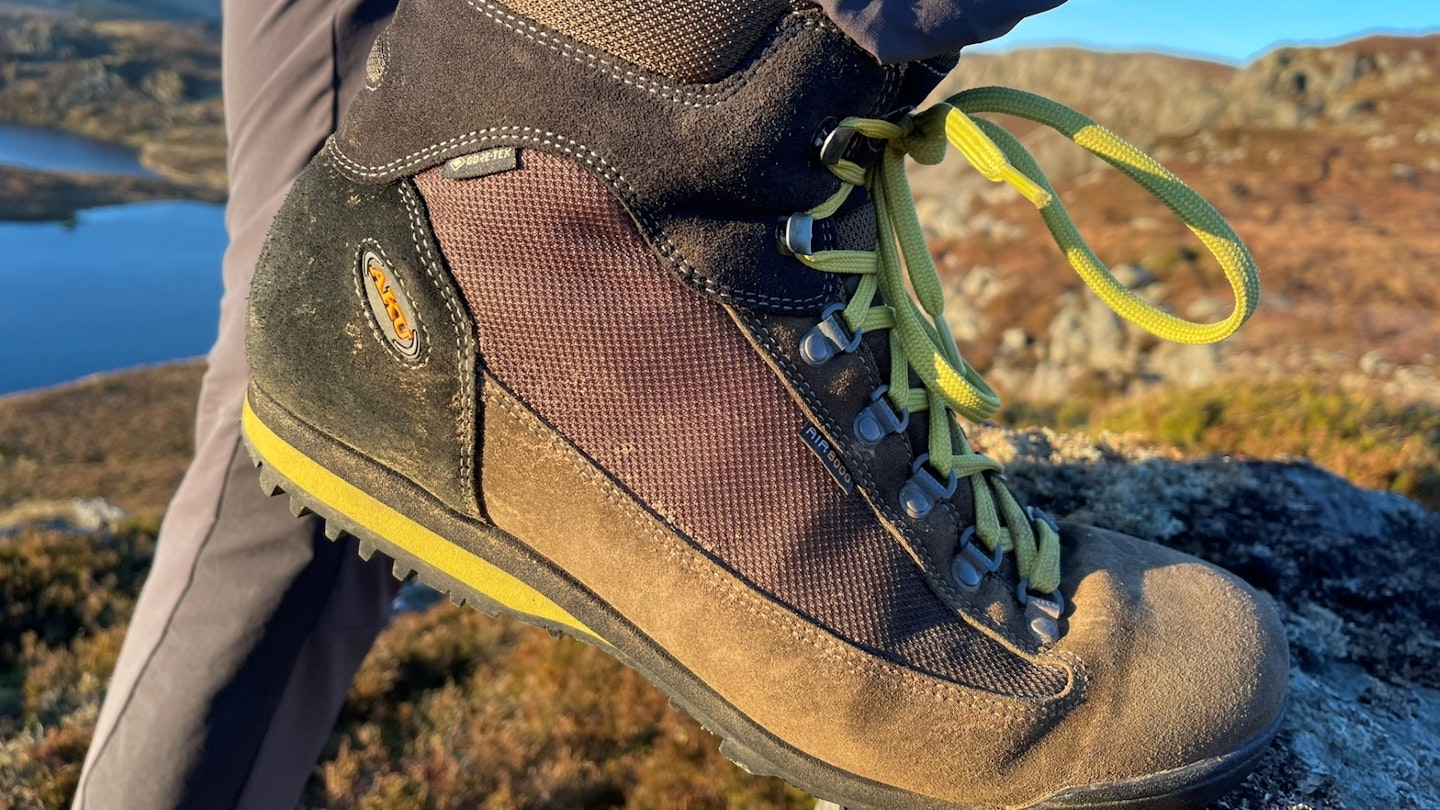
The boot’s midsole is made from a double density die cut EVA. It's a kind of foam rubber that’s tough yet soft and flexible, with 20% recycled content. Underfoot, the Slope boot uses an unusual Vibram Erica Everest outsole.
This has a striking-looking lug pattern – rows of densely packed, stud-like 5-6mm deep cleats arranged in a multi-directional pattern. They're designed to provide plenty of bite for maximum ground contact and traction.
Each boot weighs 520g (UK 8), which is neither ultralight nor excessively heavy. They’re certainly not as light as the most featherweight fabric mid-cut hiking boots on the market, which hover around 400g per boot. But they certainly don’t feel clumpy or leaden, either in the hand or (more importantly) on the feet.
In fact, for many they’ll strike a nice middle ground.
The tongue is gusseted right to the top of the boot to prevent water and debris getting inside, and the lower lacing features traditional metal D-rings, with two lace hooks for an easily adjustable fit around the ankle. The toebox has a front rubber bumper but is mostly suede. This means it’s neither particularly stiff nor strong, though conversely the snug reinforced heel counter holds the heel in place reasonably firmly.
The fit is true-to-size with medium volume and width overall that should suit most foot shapes. The toebox is slightly asymmetric to give more space for the big toe, but not excessively so.
Performance and comfort
Straight out of the box these boots feel lightweight and flexible. The suede and textile uppers deliver high levels of comfort, but they’re not particularly structured. This means that even when you lace them pretty tightly, ankle support and protection is minimal.
For hikers that require more stability and a secure hold around the ankle, AKU has several other models better suited to such needs, including the AKU Tribute, Trekker Lite III and Trekker Pro II GTX.
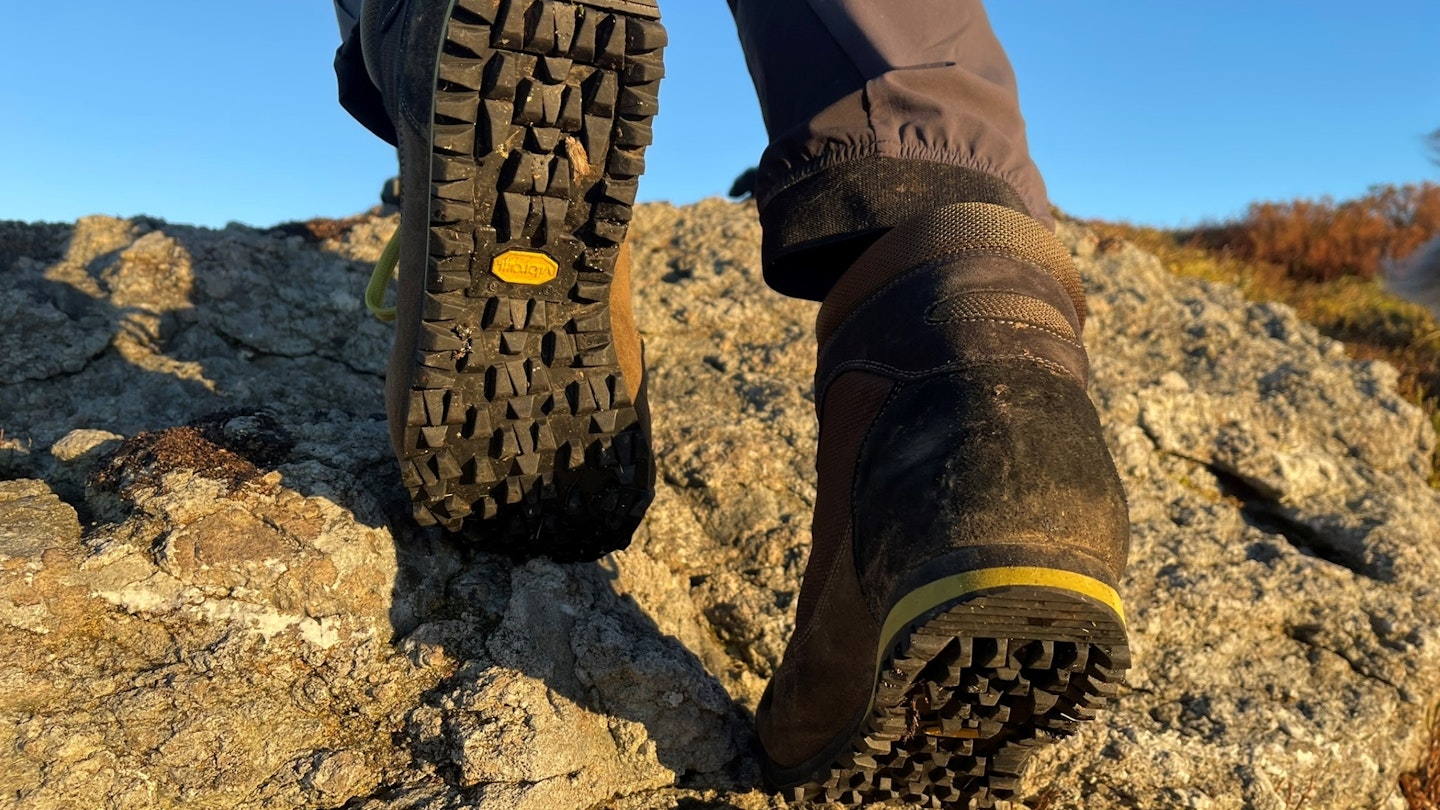
The Air 8000 material does seem to do a good job of keeping feet dry and comfortable though. I certainly felt that my feet weren’t as hot or clammy as they usually are in Gore-Tex lined boots.
Despite that, when splashing through puddles and crossing muddy ground, feet stayed dry. The fully gusseted construction technique also gives these boots a superior flood height compared to many rivals, even some that look a lot beefier and more protective.
The boot’s fairly thin midsole is the only real drawback. It’s comfortable enough underfoot, but doesn’t compare favourably with the maximalist, ultra-cushioned designs of more modern ‘fast and light’ hiking footwear. If you’re after loads of spring and amazing energy return, I’d suggest looking at alternatives from brands like Hoka and Inov8.
On the other hand, the boot’s lower profile ensures it feels neat and precise across a range of different terrain. Unlike chunkier boots, they don’t feel vague, clumpy or ungainly.
Underfoot traction is also very good on everything but the sloppiest ground. It’s well suited to moving fast on dry, hard-packed mountain paths and trails, and also grips well on grassy slopes, even when descending. But the densely packed lugs do tend to clog a little in thick mud.
Sustainability
AKU has nearly a half-century of footwear manufacturing expertise. The brand is based in Montebelluna, Italy – a region known as the global hub of expertise in hiking boots, since it is also home to an array of other respected brands including Scarpa, Lowa and Asolo.
AKU also owns its own factories, does not outsource production to the Far East, and therefore has better control over the quality of its footwear. Most of its mountaineering footwear is made in Italy, though some of the more affordable product lines – including the Slope – are manufactured in its facility in Romania.
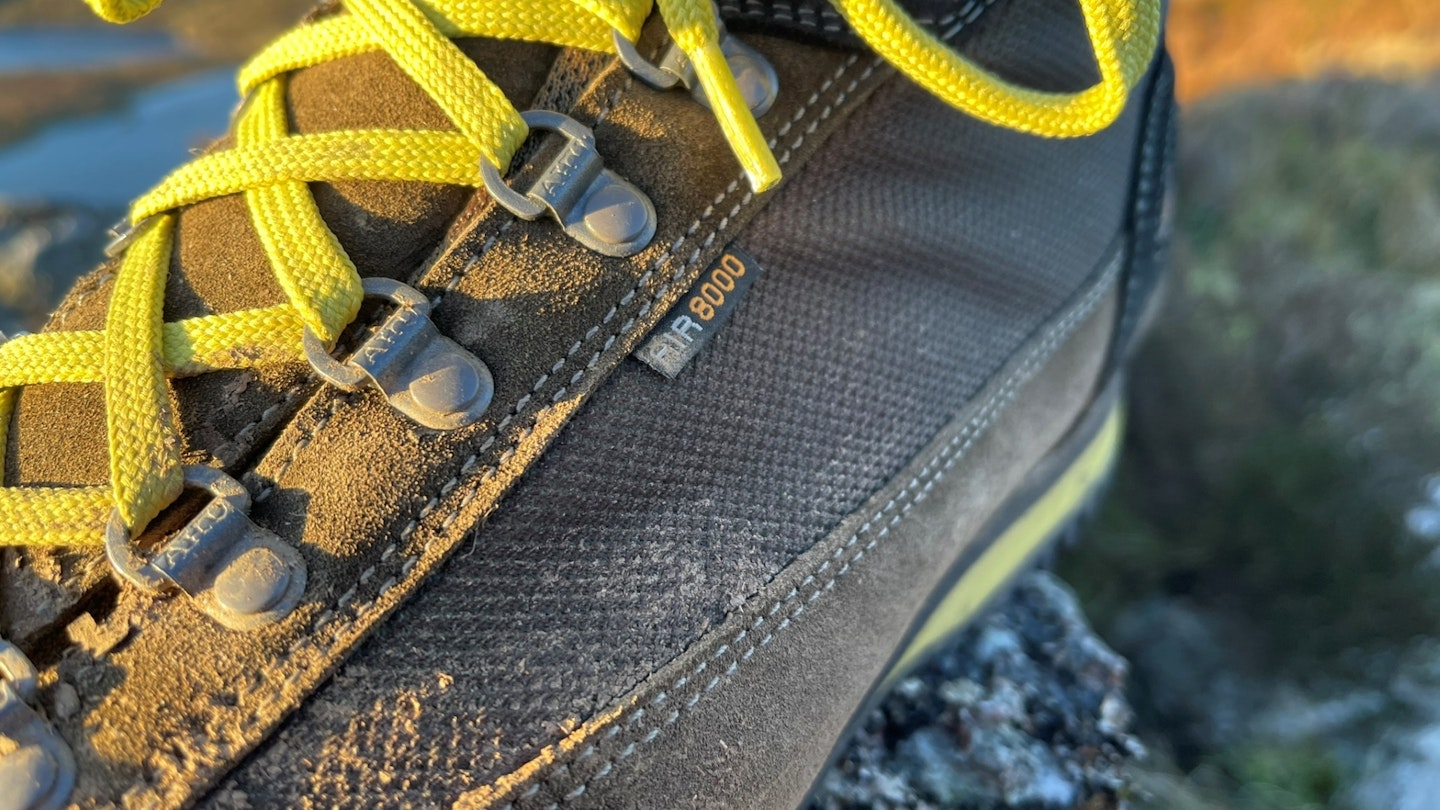
However, it’s clearly a high-quality, well-made, reputable boot. All materials including the suede leather are 100% traceable and sourced from European manufacturers. The Gore-Tex liner is laminated with 99% recycled yarns; the midsole is 20% recycled; and the laces are made from 100% recycled polyester.
Price and competition
The AKU Slope Original GTX has a UK RRP of £205. That’s certainly not budget boot territory, but for the money you are getting a high quality, European-made boot, unlike most rivals at this price point, which are typically manufactured in South-East Asia (usually Vietnam, Cambodia or Thailand).
You can buy lighter boots, but it’s worth noting that those suede uppers will likely outperform fabric-based boots, and the higher ankle delivers superior waterproofing (though not necessarily superior support) compared to most mid-cut alternatives. If you want low weight above all else though, then look at various models from Hoka, Inov8 and Salomon.
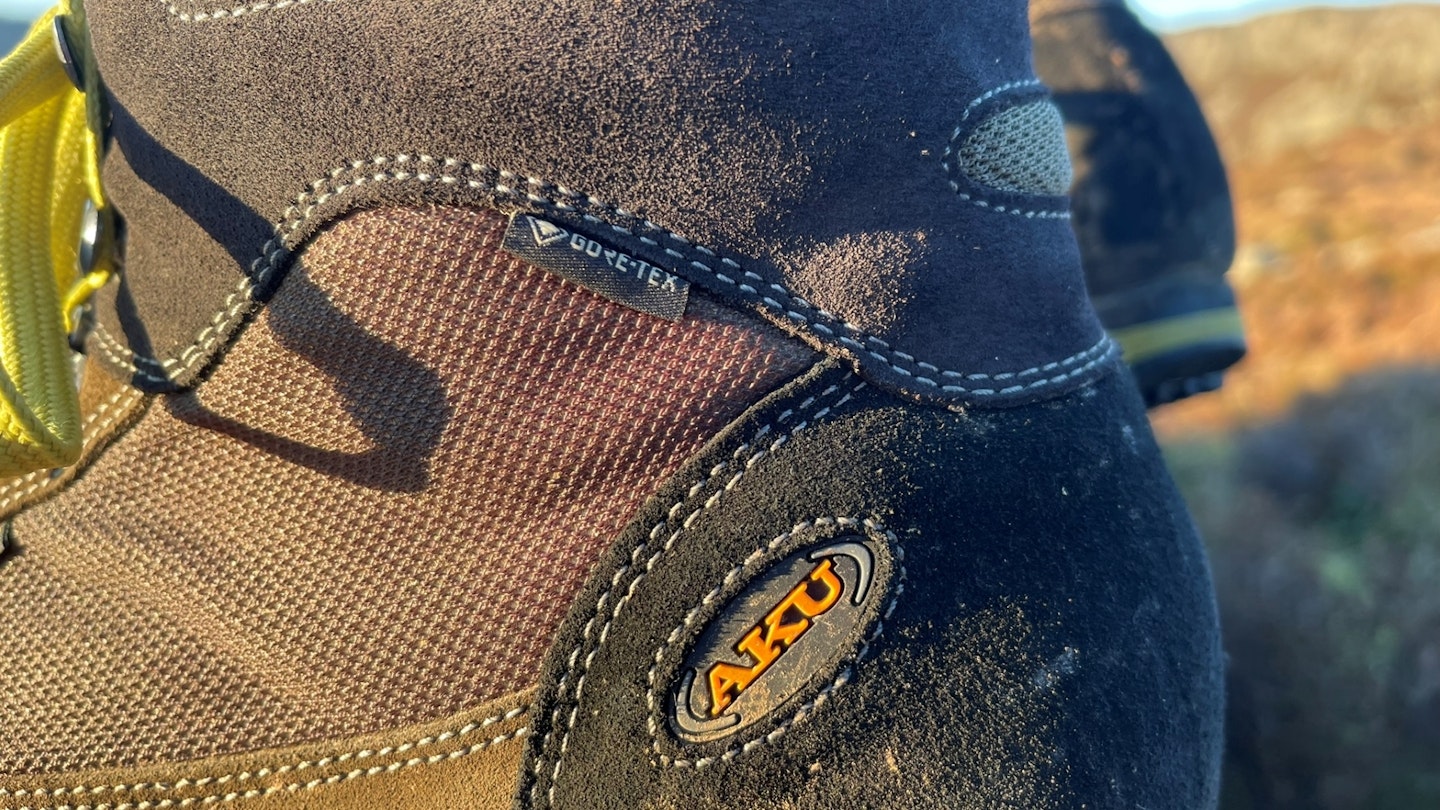
On the other hand, if you’re looking for a boot to go the distance for years to come, then look for nubuck or full-grain leather walking boots rather than suede. Most are inevitably pretty heavy and firm-feeling underfoot, but exceptions are the KEEN Pyrenees and Danner Mountain Evo 600. Both of these alternatives also offer superior cushioning underfoot and share the same traditional, heritage styling.
All of these boots have positives and negatives, and though the AKU Slope Original is no exception, it is one of the most well-balanced boots we’ve tested in recent years – reasonably light, very comfortable, fairly grippy and reliably waterproof without getting too hot and sweaty. Bottom line? It looks good, feels good and performs well. But some might want more cushioning underfoot or structured ankle support.
Verdict
There’s plenty to like about this heritage hiker aside from its retro looks: it’s a dependable boot with a lightweight and comfortable feel, despite lacking a bit of cushioning. Overall performance is also excellent on all but the sloppiest or steepest ground.
About the author

Matt Jones is a freelance journalist based in the heart of Snowdonia National Park, he’s a vastly experienced gear tester and self-confessed outdoor kit geek. Matt’s been one of our main gear testers for the last couple of years and is the first person we call with any complicated kit queries that need in-depth and forensic analysis.

